|
Have you ever wondered how the Historic Artcraft Theatre got its name? Whether or not you believe a name holds power, the Artcraft perfectly symbolizes how the theatre is a small epicenter of movie history. Since no other Artcraft theatres are known to still exist today, Franklin's local movie hub stands out in the crowd when it comes to small-town theatres. When I have a question, I sit down with Glenn Faris, history and preservation coordinator at Franklin Heritage, Inc., to get down to the answer. In the early 1900s, many movie theatres of the time drew inspiration from otherworldly names, such as the Rio, Alhambra, and Gem. These names gave off an air of mystique. When visitors would come to the movies, the name was part of the Emerald City effect. Patrons were with Dorothy and Toto, being transported from real life to another world altogether. These names led to the popularity of owners decking out theatres like palaces with excessive decorations, facades, and motifs. The second place a theatre could get its name was by being part of a film studio or group of distributors. During that time, many theatres were married to the studios that produced the film. For example, Paramount Theatres would show movies from only Paramount Studios, and Fox Theatres would show movies from only Fox Studios. This led to a monopoly in Hollywood that was disbursed over time. (You can read more about that in this conversation with George Chimples and this article about Trueman Rembusch.) However, many theatres around the country still are named after the studios that used to own them. (Check out the Paramount Theatre in Oakland, California.) When it comes to our local Franklin theatre, by the time the Artcraft was constructed in 1922, the very name “Artcraft” was out of style. In 1920, a local group of businessmen formed the Artcraft Theatre Corporation and began to build the theatre on Main Street. This was at the same time when, in Hollywood, a group called the Famous Players–Lasky Corporation wanted to challenge Paramount Theatres. The Famous Players–Lasky Corporation created the Artcraft Picture Company to be able to lease and distribute films in competition with Paramount. The Artcraft Picture Company saw many successes in the 1910s, producing many successful movies and a cabinet of successful actors, actresses, and producers. “They paraded posters across trade magazines and theatre lobbies with pictures of Mary Pickford, Cecil B. DeMille, and D.W. Griffiths—the all-stars who dominated the screen and allowed the Artcraft Picture Company to become hugely successful in the movie industry,” said Glenn. Since the company was dominating the screen and producing the films, they also distributed them. “The mixing of producer and distributor threw off the pyramid basis of the industry and unsteadied the weight of the whole motion picture industry,” shared Glenn. The rising Artcraft Picture Company's success and imbalance of being a producer and distributor made competition strong between them and Paramount. In 1916, the Famous Players–Lasky Corporation bought one hundred percent of Paramount's stock, which put Artcraft Picture Company in ownership of Paramount. After this shift, the company changed its name to Paramount-Artcraft Pictures for a very brief time. This change also initiated a monopoly lawsuit using the Sherman Anti-Trust as its basis. (According to the National Archives, the Sherman Anti-Trust was approved on July 2, 1890, and was the first Federal act to outlaw monopolistic business practices.) Soon after combining both companies, Artcraft slipped out of the name, and the Famous Players–Lasky kept the name Paramount because the name Artcraft was associated with the monopolistic lawsuit. So, back in Franklin, IN, why would a group of businessmen keep the name Artcraft? They chose the name several years after the Artcraft Picture Company's height of success in Hollywood and after the kerfuffle with the lawsuit raged. Why was the name Artcraft still appealing? By 1920, the Artcraft Picture Company barely distributed movies when the Franklin's Artcraft Theatre was formed in Indiana. While the term “Artcraft” seemed outdated, the Franklin businessman kept it for Franklin's vaudeville theatre for three likely reasons. “First, the businessmen might have assumed that following the lawsuit, the Artcraft Picture would resume distributing movies,” shared Glenn. “Second, the Artcraft name was already associated with quality pictures and stars that would resonate with patrons as quality entertainment. Third, Artcraft Pictures did acquire Paramount, and while the name was combined to form Paramount–Artcraft Pictures for a brief time, by 1920, it was not likely that the company would return to its original name of Artcraft Pictures in its future.” Glenn also learned that Franklin's Artcraft did not stand alone in naming their theatre after the Hollywood company. At the time, a handful of other theatres across the Midwest also had the name Artcraft. “From 1915 to 1922, several Artcraft Theatres were constructed in Chicago, IL; Franklin, IN; Frankfurt, IN; Cleveland, OH; and many other cities,” said Glenn. While these theatres were Artcraft Theatres back in the day, as of today, Franklin's Artcraft Theatre is the only known Artcraft that still stands by its original name.
So, what is in a name? Do these theatre names help us understand anything beyond identifying which theatre is which? Glenn states, “These names give an important distinction that divides the movie industry until 1948 with repercussions still seen today. The malleability of theatre names in the early decades of the film shows the willingness of the exhibitor to change for the business.” The Famous Players–Lasky success demonstrates the explosive growth and competition of the early movie industry, and their merger displays the blending of two of the three traditional roles of the movie industry: the producer and distributor. “This breakdown led to conflicts, lawsuits, New Deal codes, and Supreme Court decisions,” shared Glenn. “This early example of monopoly would not be the last time that the Sherman Anti-Trust bill would be forced into Hollywood Studios—most of the time even from the lobbies of theatres themselves.”
0 Comments
|
About MeganMegan Elaine is a writer and storyteller who lives in Franklin, IN. Archives
June 2024
Categories |
57 N Main St, Franklin, IN 46131 • (317) 736-6823
Franklin Heritage, Inc. is a non-profit 501(c)(3) historic preservation group that owns and operates The Historic Artcraft Theatre.
Franklin Heritage, Inc. is a non-profit 501(c)(3) historic preservation group that owns and operates The Historic Artcraft Theatre.

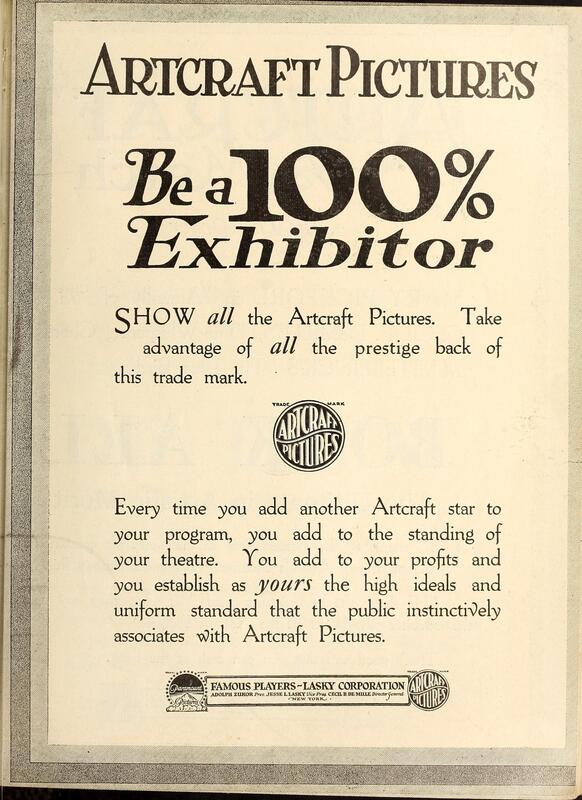
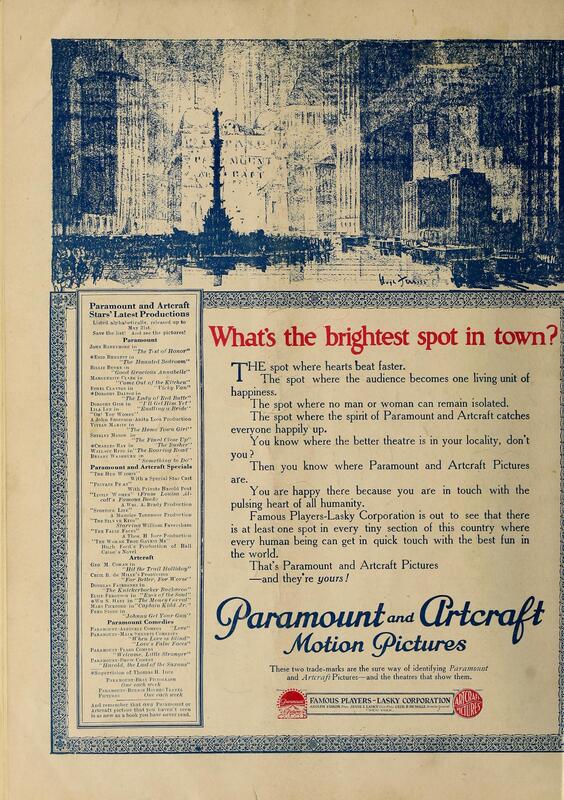
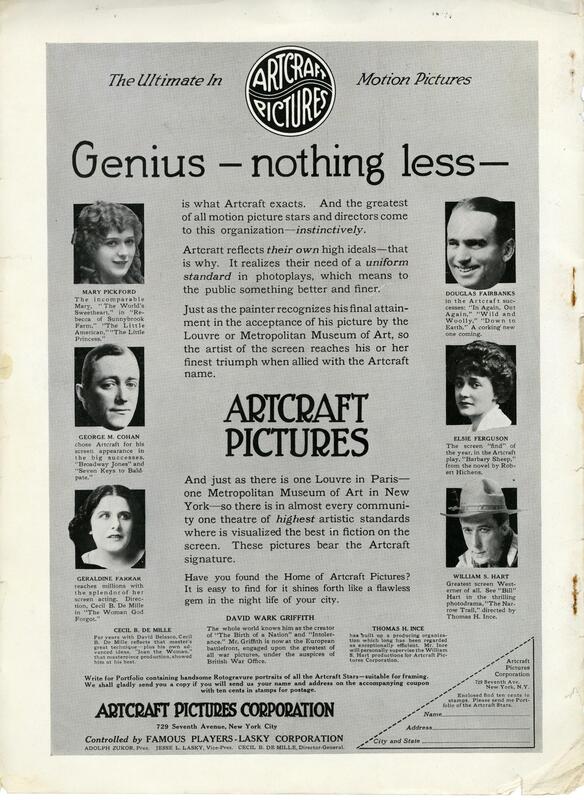
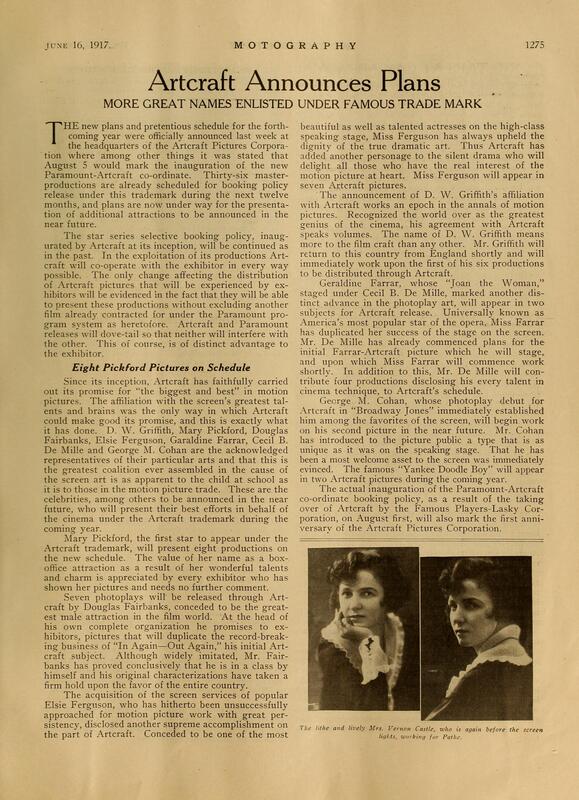
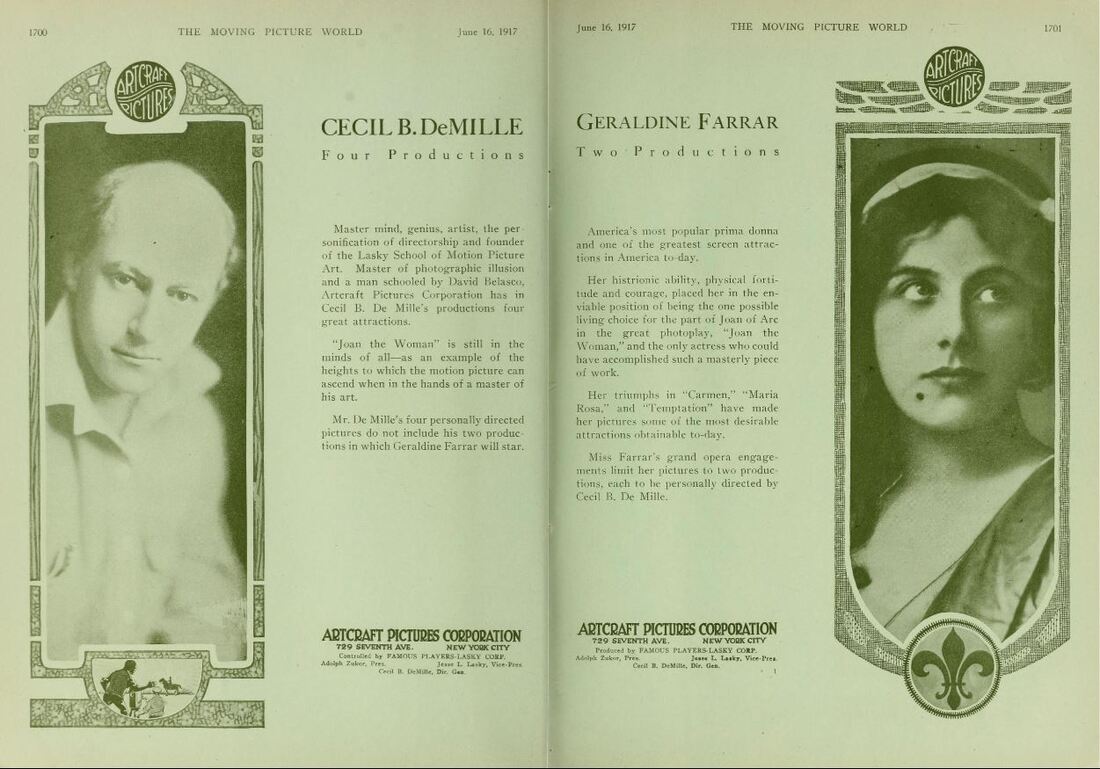

 RSS Feed
RSS Feed